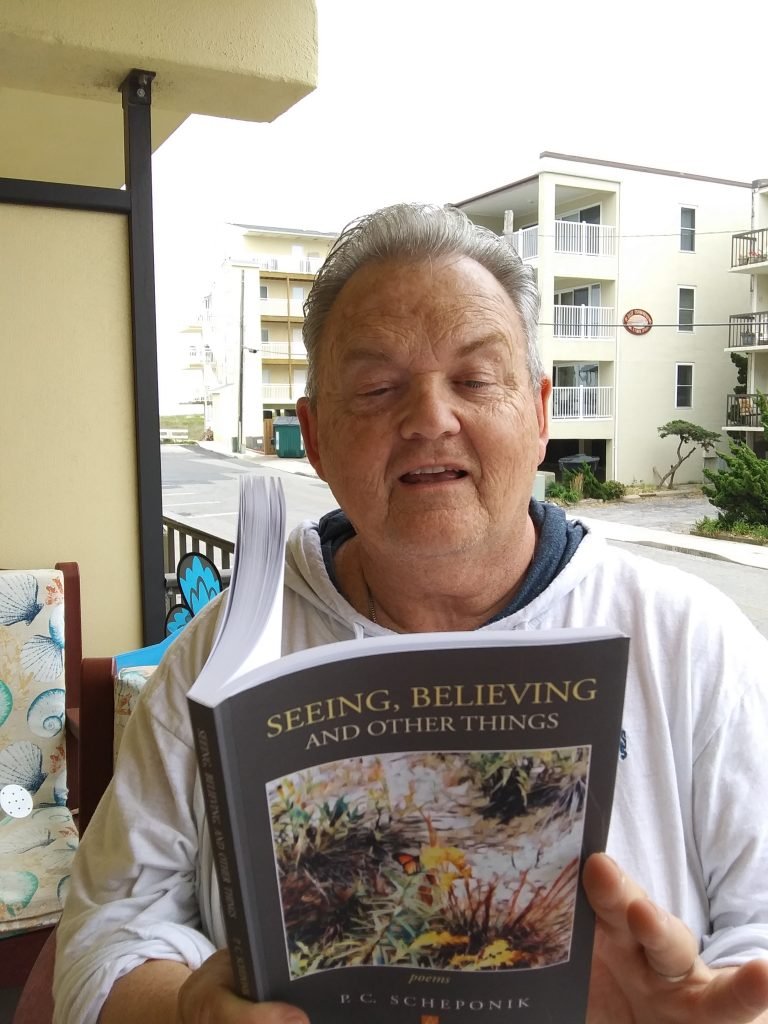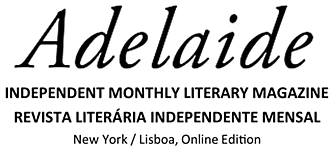Tell us a bit about yourself – something that we will not find in the official author’s bio?
I have always been drawn to the natural world. Its mystical, magical elements have always lured
me imaginatively and spiritually–even as a child. The need to believe is as fundamental to me as
breathing–whether or not that believing involves God, family, friends, or the sun, sea, sky,
forests, fields, and the lives that fill them. The sense or feeling of spirit imbuing everything and
everyone nourishes my will to live, to love, and to write. This one life I have in this beautiful
world is a gift I try never to take for granted. Every day is filled with miracles manifesting among
the sorrows and fears, like wildflowers woven among the thickets of weeds. I make it my habit
to see them. Nature has always made me feel at home, like I belonged to something greater
than myself, like there was some power far greater than my hopes, my fears, or my dreams.

Do you remember what was your first story (article, essay, or poem) about and when did you write it?
My very first poem was about Easter. I wrote it when I was nine years old. I remember that I ran
in and recited it to my mother who was on a ladder in the bedroom, painting the wall. She
stopped and listened with her full attention and told me that it was beautiful. Someone heard
what I had said and told me that it was good. I think I knew then that I would always use words
to connect with the world and with people. I think poetry became “my thing” that day.
What is the title of your latest book and what inspired it?
My latest book is Seeing, Believing, and Other Things. I really am more of a poetry journal writer
than a maker of books. I write every day, usually in the morning. I have a steamer trunk full of
completed poetry journals. I tend to be very metaphysical in my themes. Beauty and truth and
their philosophical connections underpin much of my writing. Nature, family, theology,
philosophy, science, and the psychology of being all run rampant through my work, which is
sometimes confessional and often psalm like in its praise of the miracles and mysteries of being.
I had submitted to Adelaide’s Anthology Contests numerous times and made the short list once
and was a finalist in all others. Editor Stevan Nikolic invited me to submit a manuscript to be
considered for publication. So I went through various of my poetry journals and poems that I
had published in other literary journals and magazines. So many of my poems were litanies to
the beauties of the natural world (Seeing). So many others were a thirst for or a quest after
something I could have faith in (Believing). Still others were about family, love, loss, parenting,
growth, change, personal challenge, fear, and resignation (Other Things). Thus, the collection’s
title and chapters emerged organically to form the manuscript. The editorial staff embraced the
manuscript, and the book was born.

How long did it take you to write your latest work and how fast do you write (how many words daily)?
As I said, my latest book was a compilation of poems already written and/or published over the
years. So I cannot give an exact time frame for the actual creation of the book. If I had to be
pinned down, I would say the poems came from my more recent poetry journals, maybe over a
span of 3-5 years. The actual selection process and organizing into themes, the typing (all my
journals are long-hand), the creation of the table of contents, the revising, the editing, the
selections of a cover and personal photo before submitting the finished manuscript took about
1-2 months. Then it was about one year from signing the contract to actual publication of
Seeing, Believing, and Other Things.
I write every morning anywhere from 15 minutes to an hour. It depends how long it takes for
the poetry to take its shape upon the page. I usually write 1-2 poems a morning–each one
between 25-40 lines (most of the time). I average 30-40 poems a month and 105-170 per
journal. Each journal is usually 3 months in the making.
Do you have any unusual writing habits?
I am what you might call a quirky writer. I always create my poems writing in long-hand, using a
fine point Pilot marker. I like the smooth flow of the ink on the page, no drag to slow my
transcription from thought to written word. I choose my journals by three elements: the cover,
the finish of the paper (I prefer lined paper to unlined), and the durability-can the back cover be
bent backwards on itself for ease of writing and reading. Is the journal well stitched or spiral so
it will not fall apart. I often write in the 7/11 parking lot while drinking my morning coffee, or at
a table of The Beanery (a local coffee shop in Ocean City, MD, or Northside Park, also in Ocean
City, MD, overlooking the lagoon, or out on my veranda, overlooking the sea and bay.
Is writing the only form of artistic expression that you utilize, or is there more to your creativity than just writing?
I also paint. I prefer acrylic on canvas, though I have painted a number of wall murals for family
and friends.I have also written and illustrated several children’s books-none of them printed by any
publishers. A couple of them were self-printed, years ago, when I was working in printing as an
image assembler and plate maker.
I think painting and drawing share many of the same characteristics as writing poetry. I follow
the colors of the paintings and lines of the drawings the same way I follow the words that come
to my mind–a chase after blends, beauty, imagery, truth, and story, be they on the canvas, on
the wall, or on the page.
Authors and books that have influenced your writings?
The authors who have influenced my writing are an eclectic group. William Wordsworth,
William Blake, Percy Bysshe Shelley, Walt Whitman, Alfred Lord Tennyson, T.S. Eliot, Sylvia Plath,
Karl Shapiro, Gerald Stern, Maya Angelou, and Sharon Olds were all seminal influences who
helped shape my literary tastes and visions. More recently, I have become enthralled by the
collected works of Mary Oliver. I return to them again and again. The sheer joy and power of
celebration in her poetry is spiritual and artistic nourishment for my imagination and soul.
I often read my favorite poets whenever I hit a dry spot in my creativity. Inevitably, reading the
work of the greats, something Robert Pinsky called “monuments to their own magnificence”
always jumpstarts my artistic impulses and gets my creative juices flowing.
What are you working on right now? Anything new cooking in the wordsmith’s kitchen?
Presently, I am writing as I always do–when the words call to me, which is usually early morning
during my walk or drinking my coffee at one of my usual haunts. I am always in the process of
typing up the thousands of poems that are lying in long-hand journals in my steamer trunk. It is
a laborious process because there are always revisions to be made and grammatical errors to be
corrected. Maybe someday I will hire a typist to type up my poems. Then I will only have to
reread, revise, and correct any grammatical, punctuation, capitalization, or spelling errors.

Did you ever think about the profile of your readers? What do you think – who reads and who should read your books?
To be honest, I really write for myself,to celebrate my joys, to help cope with my sorrows. I
suppose there is a part of me that hopes there will be others who see the world similarly or who
might find my views comforting, if not affirming. I suspect the sort of person who would relate
to my poetry would be inclined toward the many beauties in nature. My readers would likely
have a philosophical and/or spiritual bent. I imagine that readers who would enjoy my poetry
would have a well-developed sense of empathy, a deep reverence for creation, and anaffinity for the tragedy of the human condition. As Arthur Miller said, “We revere our tragedies
most.”
Do you have any advice for new writers/authors?
Always write from the deep center of who you are. Write about what you know–physically,
psychologically, spiritually, emotionally, and intellectually. Write from the joy, need, sorrow,
desperation, celebration, despair, hope, and desire of your life. Then you are true to yourself.
Then your voice is your own. Then your art belongs to you. If the publishing world accepts your
verse–wonderful. If it doesn’t, you have lost nothing. You are writing because you want to
write. Your writing is your art. Art is its own reward. If you develop a reading audience, that is
grand. Sharing yourself can be a rewarding and affirming experience. Being true to yourself first
and foremost is a salvation in its own rite.
Be prepared for rejections. You will likely receive them in abundance. A great metaphor for
submissions to the publishing world is the sperm and the ovum–millions are vying for entry;
only one to a few usually get in. Editors’ tastes, an issue’s thematic demands and spacing, and
the bottom line production costs and issues all come into play. There is no way you can write for
those all important elements, nor should you.
If you believe in a poem or piece of writing, and you have refined and revised it until you can
say, “I can’t believe I wrote this!” send the piece out no matter how many rejections you
receive. If the piece is as good as you think it is, it will eventually find a home in some editor’s
heart and on some journal’s page. Speaking of journals, try the many wonderful online and hard
copy journals that exist. Don’t limit yourself to the most prestigious ones. Often the “big name”
journals are so inundated with submissions their response times are a year or more, and the
odds of getting accepted are slim to none. While it is a great honor to be featured in one of the
more prestigious journals, the satisfaction of publication will more likely come from the many
other fine journals and magazines waiting to publish new work.
Always be respectful when submitting. Make sure your submissions are clean, error-free,
adhere to the journal’s editorial guidelines, and revised to the best of your ability. Always try to
find the editor’s name to include in your submission letter. Make sure your letter is error-free,
up-to-date with your publication history, and adheres to editorial suggestions as listed in
guidelines of the journal.
Many rejection letters are form letters. Whenever an editor sends a personalized rejection,
always respond with a well-written and sincere thank you email or letter. If an editor accepts
your work, always respond with a well-written and sincere thank you email or letter. Always
follow all editorial directives for submissions. Finally, familiarize yourself as best you can with
the journals before submitting. You can do this by reading about them and perusing sample
works on their websites.
What is the best advice (about writing) you have ever heard?
Write from what you know.
Revise. Revise. Revise.
Read authors in your field. Reread. Reread. Reread those authors you love.
Try to write everyday–even if only for 15 minutes.
Read and reread your own work.
Find the best places to write, places where you are comfortable and at peace.
Learn to appreciate your own ability as a writer.
How many books do you read annually and what are you reading now? What is your favorite literary genre?
I read a great deal. I don’t really keep track of the number of books. Besides poetry, which I
devour every chance that I get, I have a wide range of interests. I enjoy philosophy, science,
humanism, and books dealing with mysticism. I also enjoy biographies and books with historical
and theological perspectives. I just finished The Future of Humanity, by Michio Kaku. I am also
rereading, probably for the 20th time, Mary Oliver’s poetry collection Devotions.
Poetry is, of course, my “go to” always. I find great satisfaction delving into poems about nature,
theology, the human condition, love, existential angst, and the joys of living in this world.
What do you deem the most relevant about your writing? What is the most important to be remembered by readers?
If I had to choose an element in my work that would stand out as the most relevant, I would
have to say it is the search for meaning and authentic being, along the lines of Victor Frankl’s
Man’s Search for Meaning. This element is metaphorically, thematically, and imagistically in so
many of my poems about nature, family, personal development, and the dynamics of
relationships. My poems are often a mixture of celebrating the wonders of this world, yet with
an undercurrent of escaping the sorrows of this world through that celebration–almost as if
singing exuberantly enough about the beauty of the rose, a sunset, or a seascape could drown
out mortality’s inexorable humming in the background.
What I hope that people will take away from my poems is the profound glory nature freely
offers us for the taking. I’d like people to gather as much beauty as their hearts, minds, and
souls can hold and to live in the joy of the present moment as if it were the only moment they
had left.
What is your opinion about the publishing industry today and about the ways authors can best fit into the new trends?
The publishing industry today remains fundamentally much like it has always been:
competitive market, editorial preference, bottom line production costs and issues, large supply
of submissions vs. limited demand for acceptances. Of course, with online and Indie publishing,
blog, and personal websites, there are more chances for publication today than in the past, but
the basic supply and demand still fundamentally holds true. There are always self-publishing
services for those who choose to go that route. Vanity presses, though ever present, are still
anathema in most literary circles.
While there is a plethora of new literary magazines and journals online today, many are
charging reading fees to cover the costs of the efficient but expensive Submittable platform for
submissions. As a writer who has a running submission total of 50-100 submissions, I cannot
afford to pay a fee to have my poems read. Think about it: the typical fee is 3.00. Now multiply
that number by 70 or 100 times, and you can grasp my dilemma. So I only submit to journals
that do not charge reading fees. I guess when the day comes that all journals charge fees, that is
the day I stop submitting my work.
As far as “fitting in” goes, this has never been my strong point. I have always been more of an
outlier. So I do not feel particularly well suited to offer advice about fitting in. I would just say
that all writers, novice or seasoned, should follow the guidelines offered by each journal or
publisher to which they are submitting and go from there. I would also advise that you should
always believe in yourself as a writer and your written word as art. Don’t be afraid of rejection
or threatened by revision. When your piece is ready, submit, submit, submit



















